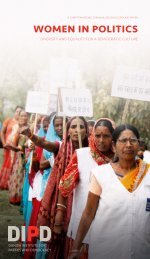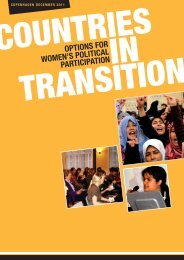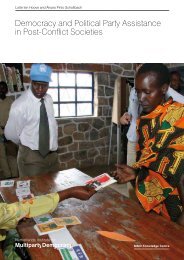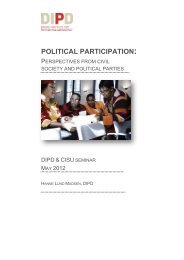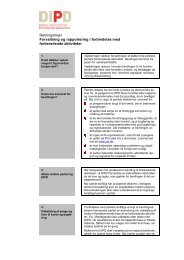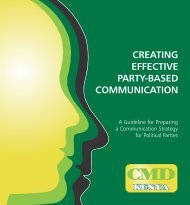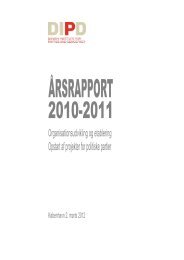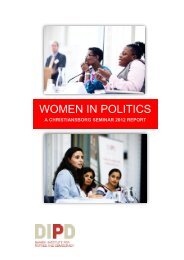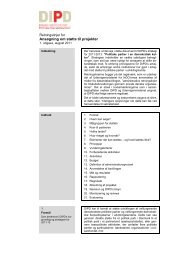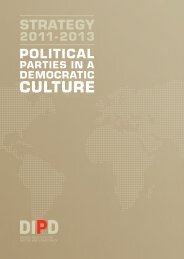Political Parties in Africa: Challenges for Sustained Multiparty
Political Parties in Africa: Challenges for Sustained Multiparty
Political Parties in Africa: Challenges for Sustained Multiparty
Create successful ePaper yourself
Turn your PDF publications into a flip-book with our unique Google optimized e-Paper software.
No. Country Direct public fund<strong>in</strong>g Indirect public fund<strong>in</strong>g<br />
International Idea<br />
12 São Tomé and Prîncipe N/A Free media access and equal<br />
broadcast time. Entitled to<br />
special tax deduction status<br />
13 Seychelles Election period, election<br />
campaign, dependent on<br />
per<strong>for</strong>mance at current<br />
elections and number of<br />
candidates put <strong>for</strong>ward <strong>in</strong> the<br />
present elections<br />
14 Sierra Leone No No<br />
15 South <strong>Africa</strong> Election period and between<br />
elections, general party<br />
adm<strong>in</strong>istration, election<br />
campaign activities; equal<br />
fund<strong>in</strong>g, current representation<br />
<strong>in</strong> the legislature<br />
16 Tanzania Election period only, election<br />
campaign activities, equal<br />
fund<strong>in</strong>g, dependent on<br />
per<strong>for</strong>mance at current<br />
elections<br />
Free media access and equal<br />
broadcast time<br />
Free media access and equal<br />
broadcast time<br />
Free media access and equal<br />
broadcast time<br />
Source: Compiled from the ACE database, http://www.aceproject.org, downloaded August 2006.<br />
Samuel Fambom’s (2003) work illustrates that the direct and <strong>in</strong>direct flow of public<br />
funds to <strong>Africa</strong>n political parties has not been appreciated or fully recorded. Another<br />
problem is that political parties, particularly opposition parties, often accuse the<br />
govern<strong>in</strong>g party of us<strong>in</strong>g public funds to f<strong>in</strong>ance its election campaigns, deny<strong>in</strong>g<br />
them access to the public media and at times creat<strong>in</strong>g draconian laws that restrict the<br />
opposition parties’ access to public resources.<br />
Famborn (2003) goes further to quantify public subsidies <strong>for</strong> political parties <strong>in</strong><br />
<strong>Africa</strong>n democracies by year of <strong>in</strong>troduction, recipient, basic allocation criteria and<br />
total amount paid per political party (see Table 6.5).<br />
Only Ben<strong>in</strong>, Mali and Niger impose a ceil<strong>in</strong>g on political party f<strong>in</strong>ance whereby no<br />
party is allowed to receive more than 20 per cent of its own resources (<strong>in</strong> Ben<strong>in</strong> and<br />
Mali) or 50 per cent of the political parties’ own resources (<strong>in</strong> Niger).<br />
Party Structures and Internal Organization



